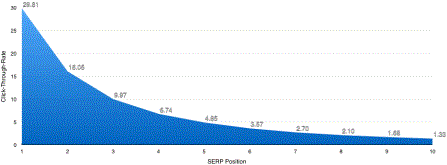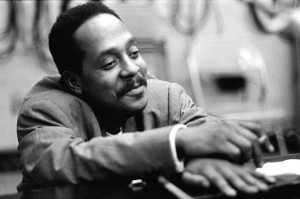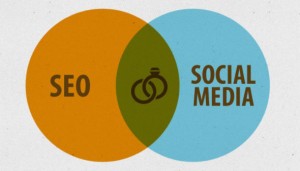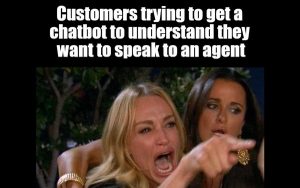The battle cry for years has been “I want to be on the first page of Google”. Well, with the way things are going, being on the 1st page of Google may not be enough for you to get the results that you’re hoping for.
The real test for the value of a search engine ranking comes from clicks. Even if you are ranking on the first page for a term that is important to you, if no one clicks on your listing, then you’re getting no value from being on the first page. To measure the percentage of people that are clicking on your listing, a formula called “click through rate” is used to measure the value of the listing. The formula for click through rate is the number of times someone clicks on your listing divided by the number of times your listing is seen (impressions).
Clicks ÷ Impressions = CTR. To put this into a real-world example, if your listing had 50 clicks with 2500 impressions, your CTR would be 2%.
This CTR is really important as you start to determine how much time, energy, or money to put toward an ad campaign or relating to organic optimization, a particular key-phrase or key-phrases. The question that you want to ask is “will the CTR be high enough to justify the resources needed”.
Because CTR is so important, there are thousands of studies that have been done over the years to determine the CTR for organic listing based on the position of the listing on a search engine results page (SERP). And, unfortunately, there is no 1 study that is the definitive answer to the CTR/Position value. But by looking across all of the reports it is possible to come up with some averages.
There are a lot of reasons that a definitive answer can’t be established:
- Search Intent: Google is doing a much better job of understanding what the users intent is, from their search query.
- Short/Long Tail Phrases: The number of words in the search query will impact the value of the CTR.
- Device: Depending on the device the user is on (phone, tablet, or desktop) will have an impact.
- Ranking Pool: The number of sites that are ranked for a key-phrase will have an impact on the CTR.
- Much Much More
First Page Isn’t Enough!
It used to be enough to be on the first page of the SERP for a key-phrase that was important to you but as the competition for phrases continues to grow, the continuing complexity of the results page, and the recognition that CTR is an extremely important metric, just being on the first page doesn’t have the value that it used to.

According to Advanced Web Rankings recent survey the difference in CTR for a 1st position listing and a 2nd position ranking on Googles results page could go from a 29.81% click through rate for the first listing on a results page to 16.05% CTR for the second listing on the page.
That’s more than an 85% difference in the results that you get from your SEO efforts, just by going from the second position on the first page to the first position on the same page! That’s a huge difference! Let’s go back to our example and say that your listing is the second listing on the first page of Google and you’re getting 50 clicks a day. If you got your listing up to the #1 spot you’d be getting over 92 clicks a day!
That’s how important the #1 position has become.
In fact, we’re also seeing a trend that shows if your listing isn’t in the #1 or #2 position on the first page of the results, the click-through rates (CTR) for the rest of the positions are either flat or decreasing.
In fact, according to FourFront, the share of clicks for listings in positions #1 and #2 have increased to about 70% in the 1st quarter of 2016, from a little over 40% in 2014. So now, being is positions 3-10 is just a little bit better than being on the second page of the results.
Before you jump on the phone and call your SEO agency, let’s take a second to talk about how to use this information for your SEO Strategy. You don’t need to have all of your key-phrases ranking in the 1st spot on the results page. I know this sounds like a contrast to everything I just said, but hear me out on this one.
Because customers no long buy in a linear purchasing path, it’s important to realize that when they are in the top-of-the-funnel sales positions, they will be more likely to engage with listing further down the SERP page, as long as the listing is relevant to their interests while they are in the top-of-the-funnel spots. These phrases should focus on educational topics on your products or services.
As customers drift down through the sales funnel, they are now more likely to take action on the listings that are in the #1 or #2 position. So, the key-phrases that you need to now be positioned in the top 2 spots are the strong call-to-action key-phrases that you use to drive sales to your website.
With the on-going changes in Search Marketing and how people are using search engines, and with the continual changes that Google is making to their results pages, every business and marketer has to take these changes into consideration with their search marketing strategy and be sure to stay up-to-date with that strategy by making the adjustments necessary to increase the results that come from search marketing and to maximize the ROI that you’re getting from search marketing.
Digital & Social Articles on Business 2 Community(20)
Report Post




